_lowres.jpg)
Back
Tristaniopsis whiteana (Griff.) Peter G.Wilson & J.T.Waterh.
| Family Name: | Myrtaceae |
| Synonyms: | Tristania whiteana Griff., Tristania sumatrana Miq. |
| Common Name: | River Tristania, Pelawan, Selunchor, Cancal, Cangal, Kayu Malu |
Tristaniopsis whiteana, also known as River Tristania, can reach 24 m tall. Native and endangered in Singapore, the species has distinctive peeling bark that transitions through a range of colours, from whitish grey to coppery brown, resulting in a unique mottled appearance.
Name
Classifications and Characteristics
| Plant Division | Angiosperms (Flowering Seed Plants) (Dicotyledon) |
|---|---|
| Plant Growth Form | Tree (Medium (16m-30m)) |
| Lifespan (in Singapore) | Perennial |
| Mode of Nutrition | Autotrophic |
| Maximum Height | 24 m |
Biogeography
| Native Distribution | Sumatra, Peninsular Malaysia, Singapore and Borneo. |
|---|---|
| Native Habitat | Terrestrial (Primary Rainforest, Secondary Rainforest, Coastal Forest, Riverine) |
| Preferred Climate Zone | Tropical |
| Local Conservation Status | Native to Singapore (Endangered (EN)) |
Description and Ethnobotany
| Growth Form | It is a tree, up to 24 m tall. |
|---|---|
| Trunk | Its bark is flakey, orange, grey and white in colour. |
| Foliage | Its alternate, stalked leathery leaves are obovate, 7-20 cm by 2-5.5 cm. |
| Flowers | Its tiny flowers are about 5 mm wide, with white petals and reddish sepals. Flowers are borne on a branched flowering shoot measuring 5-7.5 cm wide. |
| Fruit | Its fruits are small, ellipsoid, 2.5-4 mm wide. |
| Habitat | It grows along rivers from freshwater tidal reaches to the foothills. |
| Associated Fauna | Its insects are insect-pollinated. |
| Cultivation | It can be propagated by seed. |
| Etymology | Latin Tristaniopsis, like Tristania, which commemorates Marquess de Tristan (1776–1861), a French botanist. Latin whiteana, commemorating Reverend White (c. 1841), a Christian chaplain in Singapore. |
| Ethnobotanical Uses | Timber & Products: The timber is good for making straight beams and posts. |
Landscaping Features
| Landscaping | It is a coastal plant, with a neat crown, and smooth peeling bark that is orange-grey-brown in colour. It is able to grow on very steep slopes. It is suitable for gardens, parks and streetscapes. |
|---|---|
| Desirable Plant Features | Ornamental Trunk |
| Landscape Uses | Suitable for Roadsides, Parks & Gardens, Small Gardens, Coastal, Riverine |
Fauna, Pollination and Dispersal
| Pollination Method(s) | Biotic (Fauna) |
|---|---|
| Seed or Spore Dispersal | Abiotic |
Plant Care and Propagation
| Light Preference | Full Sun |
|---|---|
| Water Preference | Moderate Water |
| Plant Growth Rate | Moderate |
| Rootzone Tolerance | Moist Soils, Well-Drained Soils, Fertile Loamy Soils |
| Propagation Method | Seed |
Foliar
| Foliage Retention | Evergreen |
|---|---|
| Mature Foliage Colour(s) | Green |
| Mature Foliage Texture(s) | Glossy / Shiny, Leathery |
| Prominent Young Flush Colour(s) | Orange |
| Foliar Type | Simple / Unifoliate |
| Foliar Arrangement Along Stem | Alternate |
| Foliar Attachment to Stem | Petiolate |
| Foliar Shape(s) | Non-Palm Foliage (Obovate, Lanceolate, Oblong) |
| Foliar Venation | Pinnate / Net |
| Foliar Margin | Entire |
| Foliar Apex - Tip | Acute |
| Foliar Base | Cuneate |
| Leaf Area Index (LAI) for Green Plot Ratio | 3.0 (Tree - Intermediate Canopy) |
Floral (Angiosperm)
| Flower & Plant Sexuality | Bisexual Flowers |
| Flower Colour(s) | White |
|---|---|
| Flower Grouping | Cluster / Inflorescence |
| Flower Location | Axillary |
| Flower Symmetry | Radial |
| Inflorescence Type | Cyme |
Fruit, Seed and Spore
| Mature Fruit Colour(s) | Brown, Green |
|---|---|
| Fruit Classification | Simple Fruit |
| Fruit Type | Dehiscent Dry Fruit , Capsule |
Image Repository
Others
| Master ID | 1903 |
|---|---|
| Species ID | 3196 |
| Flora Disclaimer | The information in this website has been compiled from reliable sources, such as reference works on medicinal plants. It is not a substitute for medical advice or treatment and NParks does not purport to provide any medical advice. Readers should always consult his/her physician before using or consuming a plant for medicinal purposes. |

_lowres.jpg)
_lowres.jpg)
_lowres.jpg)
_lowres.jpg)
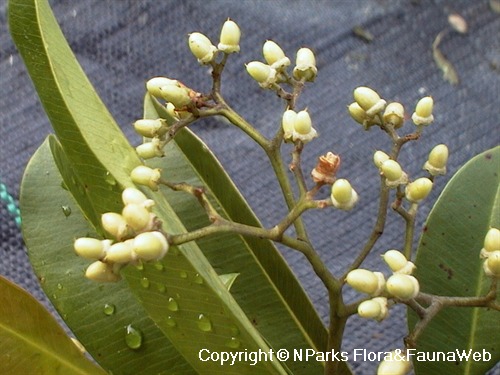
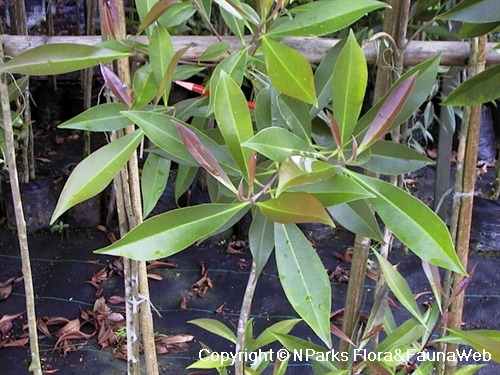

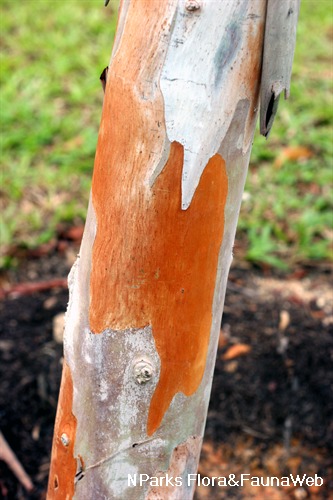
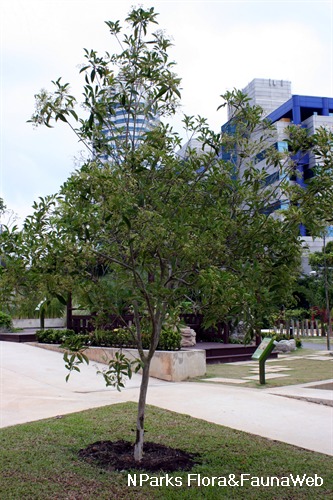
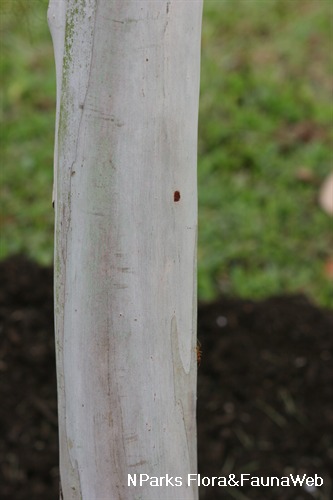

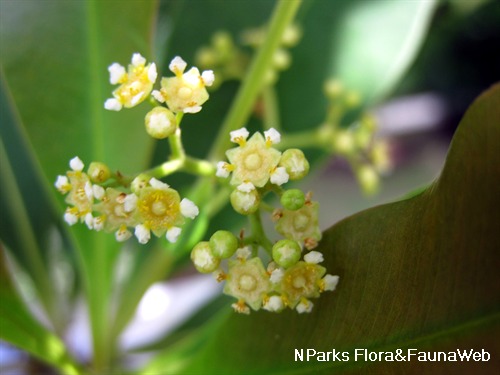
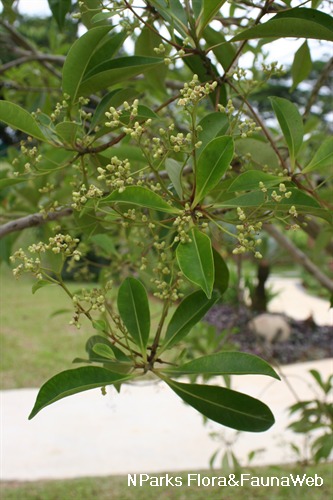
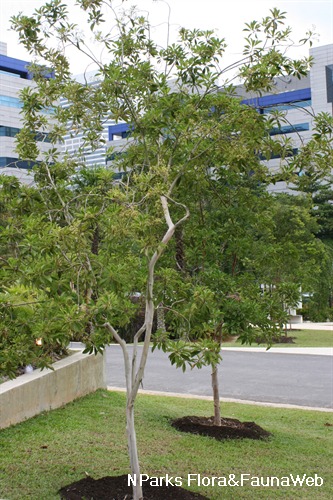
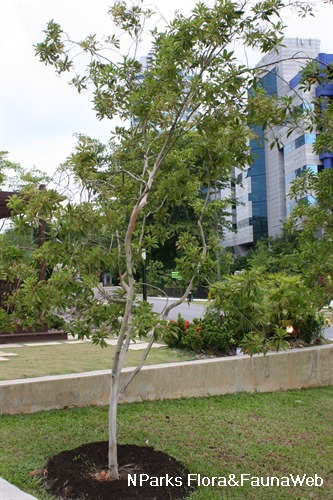

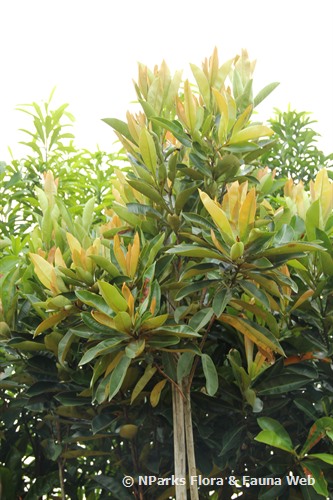
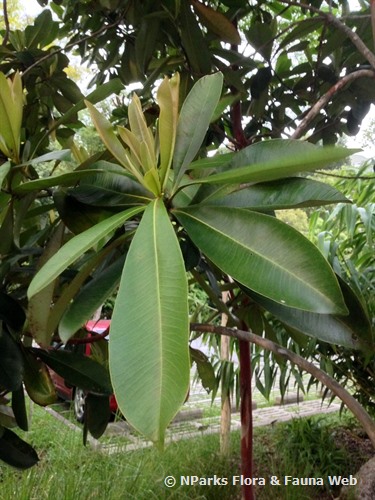
_lowres.jpg)